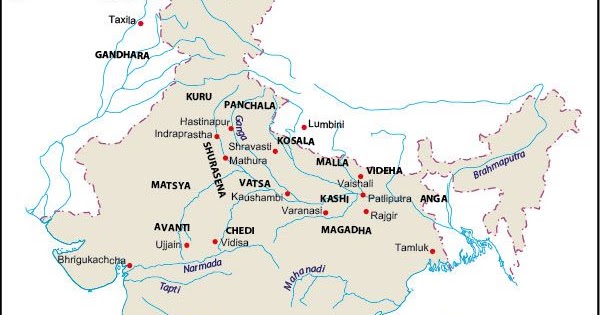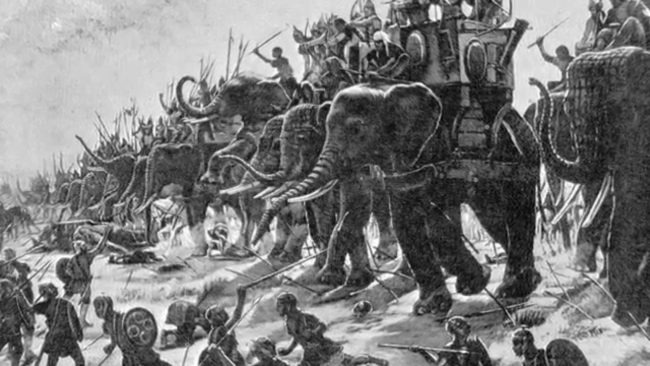Mahajanapadas The Early Hindu Kingdoms
Life in Mahajanapadas
Grihapatis
Grihapatis have managed the agricultural land. They work along with their family members in the fields. They also employed enslaved people and workers. Some Grihapatis had more land and used more enslaved people. They were treated as the village head, and sometimes the king appointed them as the Tax collectors. Law and order were in hands and judged the disputes among the people. The potters made pots for cooking and storing grains. Carpenters who made carts, furniture, ploughs and weavers wove cloth for the villagers. The Grihapatis had no such skills, so they gave them grains in return for their products.
Cities in Mahajanapdas:

Poor workers mainly inhabited the cities. The craftsman had a lot of demand; they made good crafts for sale. Enslaved people and servants played a large part in the towns. The potters made beautiful and delicate pots. They had great demand in all Mahajanapadas. The Pots are the only source to store the grains during the rainy season. The weavers had woven fine clothes, which had a lot of demand, and the rich bought them at high costs. The Goldsmith made gold and silver jewellery. The kings and noble people were the primary sources of them. They also made copper and bronze vessels and used decorative purposes in rich houses. Besides these, many professionals were in progress, like horse trainers, sweepers, water carriers, accountants, soldiers and wood carvers. So the cities in Mahajanapadas were the places for many craft persons. The great traders visited these cities and purchased the products of the crafts persons. They also brought their country articles and sold them in Mahajanapadas. The merchants visit the caravans to sell Oxen, donkeys and camels. Like the purchase and selling method, they got huge profits.
Kings of Mahajanapadas:
Generally, Mahajanapadas were ruled by kings. They maintained their army to ensure the people followed their orders. The kings built beautiful palaces in the capital cities of Mahajanapadas and lived in them. They build strong fortresses of wood, stone, brick and mud. These constructions need a lot of money. So they imposed taxes on cultivation and other income sources. With the taxes, they paid salaries to the soldiers and brickmakers. Thousands of men and women also built the buildings on the agreement of paid wages. The village headmen and other officials have followed the orders of kings.
Expand of Mahajanapadas:

Many kings wanted to be more powerful and wealthy. The increase of wealth purpose, they impose high taxes on the people. To strengthen their power, the kings the wars to conquer neighbouring kingdoms. Generally, Grihapities suffered a lot because of taxes. The Grihapatis had to divide their crops into six equal parts and give one piece to the king. The craftsman also pays taxes. However, they work free of charge for the king for one day every month. The hunters in the nearby forest areas, too, had to bring forest products to the king. Some of the taxes were probably collected in the form of coins. Sometimes the kings encouraged the headmen to collect the taxes on their own.
Religion Formation During Mahajanapadas Period:
Mahajanapadas and the cities were situated on the bank of the river Ganges. The people belonged to different backgrounds. They were artisans, herders, hunters, gatherers, Vedic people and others. They interacted, learnt each other’s religious practices and ideas and adopted them. Thus a new mixed religious culture developed in which people performed Vedic sacrifices. So they worshipped fire, the sun, rivers, goddesses, and animals like monkeys, elephants, snakes and trees. They also worshipped their ancestors and believed that souls continued to live even after the body’s death and were reborn. These thoughts made reborn again different religions.